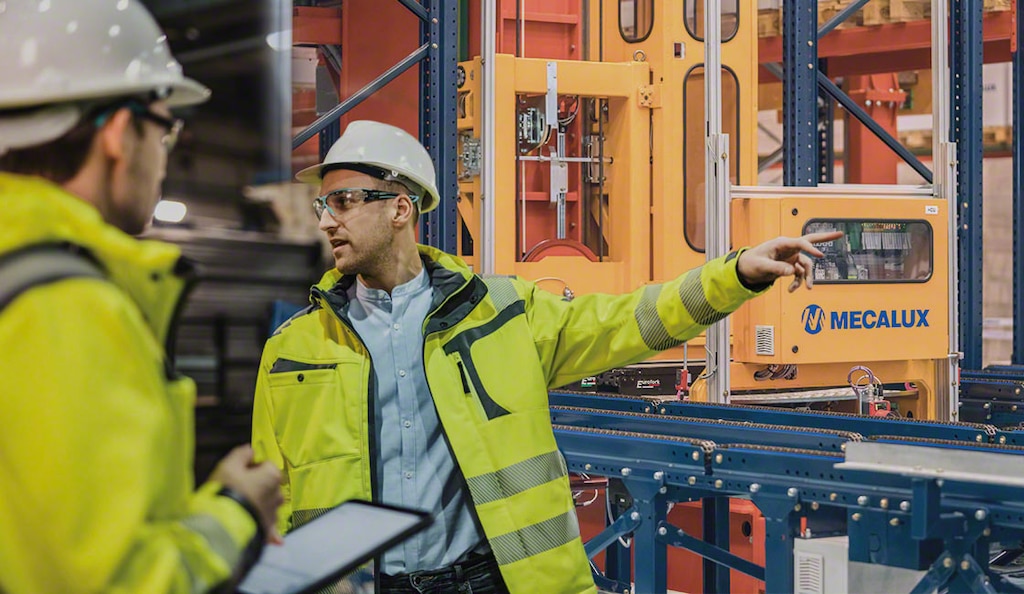
What is CMMS software?
A CMMS (computerised maintenance management system) is a software solution that centralises a company’s maintenance operations.
In this post, we explain what CMMS software is, how it works and the benefits it offers. We also explore how it can become a powerful tool for boosting operational efficiency and enabling data-driven decision-making.
What is CMMS software and how does it work?
A computerised maintenance management system, or CMMS software, is an application designed to organise, monitor and optimise maintenance tasks across a business’s facilities. Its goal is to ensure the availability of critical assets — namely vehicles, machinery, infrastructure and other equipment — in industrial and logistics environments.
CMMS software serves as a centralised database that tracks all physical assets requiring maintenance. It also manages work orders, spare parts, maintenance teams and both preventive and corrective maintenance plans. In more advanced setups, a CMMS can incorporate predictive maintenance features powered by advanced technologies.
CMMS software is employed across diverse industries, including manufacturing, transport, healthcare, hospitality, facility management and public services. In all these fields, CMMS solutions help extend asset lifespan and promote a more proactive, data-informed approach to maintenance.
How does a CMMS work?
CMMS software collects and manages all data related to a company’s maintenance operations. It pulls information from technicians, supervisors and even smart sensors connected via technologies such as IoT devices or SCADA systems, which provide real-time updates on equipment status. All maintenance tasks can be planned, executed and tracked from a single digital interface.
Key CMMS capabilities include:
- Technical staff management
Assigns tasks based on technician expertise or workload, tracks activity and logs completed work. - Asset inventory
Centralises information about physical equipment and infrastructure, e.g. manufacturer, model, serial number, location, usage conditions, warranties and manuals. - Work order administration
Issues detailed work orders with task descriptions, priority levels, estimated timelines and real-time status updates. - Preventive and predictive maintenance
Automates the scheduling of routine inspections based on asset usage and condition to minimise unplanned downtime. In digitalised environments, predictive maintenance helps anticipate potential failures before they occur. - Parts and materials tracking
Keeps records of all components, tools and supplies needed for maintenance work. - Report generation
Creates tailored reports that measure the efficiency of maintenance operations.

Benefits of CMMS
Implementing CMMS software offers multiple operational and strategic advantages for organisations that manage physical assets and rely on the performance of their equipment:
- Optimised asset management. A CMMS provides detailed oversight of equipment and infrastructure status, usage and performance. With this visibility, businesses can make more informed decisions when planning inspections, repairs or replacements, fostering more strategic management of technical resources.
- Reduced maintenance costs. Automated monitoring and access to a complete maintenance history make it easier to detect recurring issues, prevent major breakdowns and increase task efficiency. As a result, companies can reduce downtime and cut costs associated with emergency repairs or unexpected replacements.
- Improved technical team organisation. The system centralises all maintenance-related information, streamlining communication between managers and technicians. This avoids errors, overlapping tasks and duplicated work, ensuring that every job is carried out as planned.
- Regulatory compliance. A CMMS maintains detailed records of inspections, certifications and mandatory checks. These detailed logs simplify audits and support compliance with legal requirements and quality standards related to maintenance.
- Historical analysis of maintenance. The software records key information like parts used, faults detected and downtime. With this traceability, companies can fine-tune maintenance processes and align strategies with broader business goals.

CMMS and the importance of maintenance in logistics
Speed and accuracy are critical to staying competitive in logistics. Therefore, maintaining storage systems and material handling equipment is a strategic priority.
A CMMS helps mitigate risks by enabling organisations to plan and track all maintenance tasks. Ideally, this software should be paired with a logistics solution provider’s lifecycle services to keep equipment and assets in optimal condition.
Mecalux, for instance, offers services designed to maximise warehouse performance. Its technical support services combine remote assistance, remote maintenance, scheduled interventions and emergency on-site service. With specialised personnel always available, Mecalux delivers quick responses to any incident to maintain operational continuity and reduce downtime.
CMMS: The foundation of smart maintenance
CMMS solutions enhance maintenance management across all sectors. But they’re especially vital in industrial and logistics environments, where equipment availability and reliability are essential for operational continuity.
By centralising information, automating tasks and leveraging data analysis, a CMMS helps prevent issues, bring down costs and boost overall maintenance efficiency. Beyond optimising task organisation and tracking, it also supports strategic decision-making based on accurate information — making it a cornerstone of smart maintenance.
CMMS software in 5 questions
What is CMMS software?
A CMMS (computerised maintenance management system) is a software programme that helps businesses manage and streamline their maintenance tasks. It centralises information about available equipment, open work orders and required resources.
What is a CMMS used for?
A CMMS ensures the availability and correct functioning of a company’s equipment and infrastructure. It improves the efficiency of maintenance operations and helps reduce downtime.
What are the benefits of CMMS software?
It enhances maintenance management by lowering costs and optimising resources. A CMMS also increases efficiency by standardising regulatory compliance and enabling historical data analysis.
What are the core functions of a CMMS?
Key features of a CMMS include managing maintenance personnel, tracking business assets, organising work orders, scheduling preventive maintenance, monitoring spare parts and generating reports.
What types of maintenance can a CMMS manage?
CMMS software can handle preventive, corrective and predictive maintenance, adapting to a company’s operational needs. Preventive maintenance aims to avoid failures through scheduled inspections, corrective maintenance addresses issues after they occur and predictive maintenance anticipates failures using real-time data and analytics.
